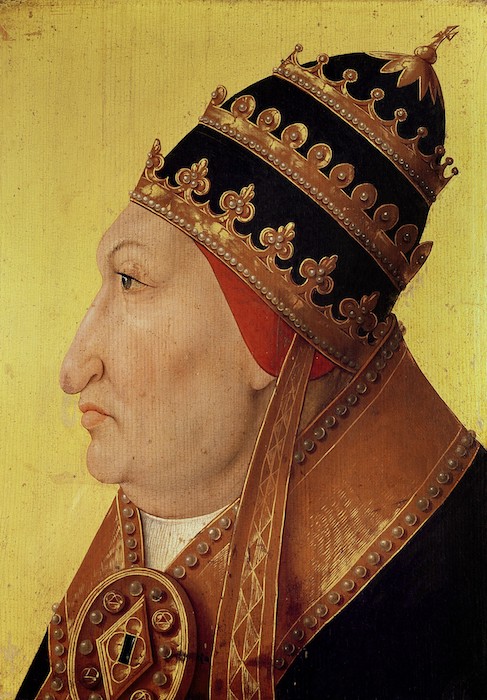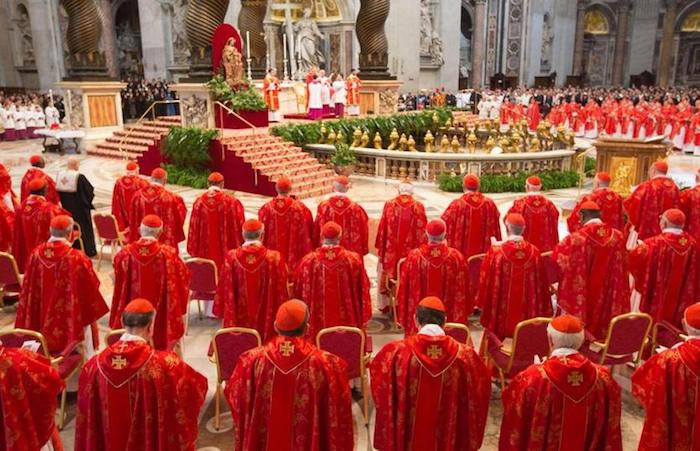Outside of condemning adulterous behavior, Christ never said anything about whom you could love.

By Timothy Egan
One pope was a father of 10 through multiple mistresses, a man who purchased the papacy with mule-loads of silver. It is said that Alexander VI, the most debauched of the Borgia pontiffs, elected in 1492, even had an affair with one of his daughters.
Another pope contracted syphilis during his reign — a “disease very fond of priests, especially rich priests,” as the saying went in Renaissance times. That was Julius II, known as “Il terrible.”
A third pope, Pius IX, added Flaubert’s “Madame Bovary” and John Stuart Mill’s book on the free market economy to the Vatican’s List of Prohibited Books during his long reign in the 19th century. He also formalized the doctrine of papal infallibility.
What these Holy Fathers had in common was not just that they were badly flawed men putting forth badly flawed ideas: At the root of their moral failings is Catholicism’s centuries-old inability to come to grips with sex.
I say this as a somewhat lapsed, but certainly listening, Catholic educated by fine Jesuit minds and encouraged by the open-mindedness of Pope Francis. The big issue behind the budding civil war in a faith of 1.3 billion people — a rift that could plunge the church back into a medieval mind-set on sexuality — is the same old thing.
And most of the church’s backward teachings, dictated by nominally celibate and hypocritical men, have no connection to the words of Jesus.
If you’re going to strike at a pope, to paraphrase the line about taking down a king, you must kill him. Right-wing Catholics, those who think allowing gay members of the faith to worship with dignity is an affront to God, have just taken their best shot at Francis.
The attempted coup was disguised as an exposé by a conscience-stricken cleric, Archbishop Carlo Maria Viganò. He claims that the pope must resign because he knew about the sexual abuse of young seminarians by a disgraced cardinal and did not defrock the predator.
It’s a fair point, and one that demands a full response from Francis. But if you read Viganò’s full 11-page letter, you see what’s really driving him and his ultraconservative cabal — an abhorrence of gay Catholics and a desire to return to the Dark Ages.
“The homosexual networks present in the church must be eradicated,” Viganò wrote. Those close to Francis, he claimed, “belong to the homosexual current in favor of subverting Catholic doctrine on homosexuality.” For theological authority, he cited the infamous 1986 letter to bishops condemning homosexuality as “a moral disorder.”
That instructive was issued by the Congregation for the Doctrine of the Faith, designed to do to heretics what the Inquisition once did, without the stake-burning.
The bishop’s letter cites Old Testament sanctions against “sodomites” and a New Testament interpretation from St. Paul, who admitted he was not speaking with direct authority from the divine. St. Augustine, who loved sex and had plenty of it before he hated it, set the church template in the fifth century, saying, “Marriage is only one degree less sinful than fornication.”
What’s missing from these puritanical pronouncements, from then till now, is the figure at the center of the faith. That’s because, outside of condemning adulterous behavior, Christ never said anything about whom you could love. Nothing about homosexuals. Nothing about priestly celibacy or barring women from clerical ranks, for that matter.
Last year, while walking the thousand-year-old Via Francigena, I came upon many Catholics along that pilgrim’s path to Rome excited about the fresh air blowing through a Vatican that hadn’t opened a window in decades. The only cloud over these spiritual sojourners was the constant news about criminal clergy.
The conservatives would do nothing to fix this, but would make the church a global pariah. The old guard is infuriated by statements like the one Pope Francis made on Sunday. When asked how a parent should treat a gay child, he said, “Don’t condemn, have dialogue, listen.”
The way out of the present crisis is more light, less darkness and a few bold and dramatic moves. For starters, clerics should not be judging other clerics; let lay members, women and men, conduct the investigations.
Priestly celibacy should be optional. It’s an anachronism, certainly not one of the “infallible” truths, and may be one of the main reasons pedophilia is thick in clerical ranks. For the first thousand years of the church, married men could become priests, as they still can in the Greek Orthodox faith.
Women should be priests. Duh. When asked about this, Francis said only men could serve because Jesus chose only men as his apostles. This logic is flawed, as Jesus also chose Jews, and you don’t see a lot of them being invited into the priesthood.
A final alternative might be to look to the United States ambassador to the Vatican for moral guidance. That would be Callista Gingrich, who carried on a six-year affair with a married Newt Gingrich and became his third wife. In Rome, as always, hypocrisy is eternal.
Complete Article ↪HERE↩!




